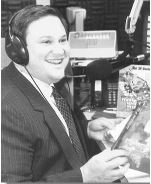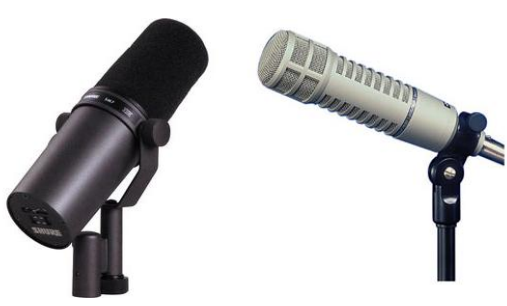Microphone Talk: Going Beyond the Old Standbys

[June 2011] Selecting the right microphone for the job is a bit more than grabbing the closest microphone on the shelf. Understanding the use, user, location, and intended transmission path leads to better choices. Mark Shander offers some help in dealing with the options.
We have come a long way from the days when your choices in microphones for new studios or live remotes were selected from a few industry staples.
The Old Stand-Bys
Now, it is true that most engineers and IT professionals in our industry are still outfitting broadcast, recording, webcast and podcast facilities with purchase decisions based on “what everyone always has done.”
Of course, such decisions based on nostalgia and personal preferences are not always wrong, since many popular dynamic microphones have solid roots in the history of radio and television broadcasting, recording facilities, and remote productions.

Many studios use a Shure SM7 or EV RE20
In the past, there were arguably two basic rules many of us used for guiding microphone purchases. They were really simple:
- If the microphone was going to be handled, or was going to be in an environment where it would be exposed to excessive handling or potential mishandling, it was always safer to buy a dynamic microphone.
- If the microphone was going to be in a stationary environment, as in a recording studio, or if the quality of the product was the primary concern, a condenser was usually the better option, especially where phantom power could easily be supplied and counted on. Real old-timers might opt for a ribbon microphone, but in today’s broadcast environment, that might be the exception.
Microphones Have Changed
Times have definitely changed.
While this is not the first column to compare the quality of inexpensive imported condenser microphones to their high-end crafted counterparts, domestic or imported, it may be one of the first to suggest we are at the point where your microphone kit could be slimmed down significantly by standardizing on one for mobile production and another for studio production – or even one kit for all purposes.
The rules for picking microphones definitely have changed as well. Selecting microphones for your studios, live performance, or for your remote microphone kit is a matter of finding what sounds good, what is durable enough for the environment, and what your budget permits.
Some additional considerations, especially with HD video reinforcement and TV broadcasting concerns, are flexibility in cosmetic design. With some very cool microphone designs appearing in videos, having the flexibility to change a microphone’s look from dull to dynamic may be more of a purchase concern than actual family of the microphone itself.
New Choices
For example, a close friend recently asked me if I was familiar with the Blue microphone line.
I shared that I had just used several condenser microphones, exclusively from that line, to record a percussion-woodwind ensemble.
However, I could just have easily used large diaphragm dynamics. That was because my final product was for a one-time use, and the play-back environment was a typical hotel public address system with so much additional noise in the room that critical listening was virtually impossible.
That having been said, the audio was also used for a direct-to-video final product, with narration. And that narration was acquired in a studio with a Blue condenser microphone.
Truly, some large diaphragm microphones give many condensers a run for their money. I could have easily replaced each of the Blue microphones with a dynamic from one of several manufacturers, for example, and the quality of the product would have been enjoyed just as much by the intended audience.
Studio Microphones
Lately, I have heard of stations installing an RE20 for their Control Room microphones, instead of some of the old standbys. Part of the reasoning might be cost, as some very good sounding microphones are now being built at modest price points.
On the other hand, given the relentless efforts to provide cleaner and crisper audio from talk and performance microphones, many engineers are giving careful consideration to auditioning several microphones before making their choice.
Next time, we will discuss what makes a good studio microphone and how to get the best out of it, even with poorly trained announcers.
– – –
Mark Shander is a computer show host and syndicator, based in Phoenix, AZ. You can contact him at mark@shander.com
– – –
Are articles like this helpful to you? If so, you are invited to sign up for the one-time-a-week.BDR Newsletter.
It takes only 30 seconds by clicking here.
– – –
